Forex trading, also known as foreign exchange trading, is the buying and selling of currencies to make a profit.
The Forex market is the world’s largest and most liquid financial market.
According to a Reuters article about the BIS (Bank for International Settlements), its daily trading volume exceeded $7.5 trillion in 2022.
This massive volume stems from the global market, which operates 24 hours a day, five days a week, and is populated by various entities, including banks, financial institutions, corporations, governments, and individual traders.
The high liquidity and continuous operation of the Forex market make it an attractive platform for trading currencies, offering numerous opportunities for profit.
This guide will help you understand the basics of Forex trading, making it easier to start.
What are the Key Terms in Forex Trading?
To succeed in Forex trading, it’s crucial to understand some key terms. Here are definitions and explanations regarding the most significant ones:
What is a Currency Pair? Currencies are traded in pairs. The base currency is the first currency in the pair, and the quote currency is the second.
For example, in the EURUSD pair (sometimes EUR/USD), EUR is the base currency, and USD is the quote currency.
The exchange rate tells you how much the quote currency is needed to buy one unit of the base currency.
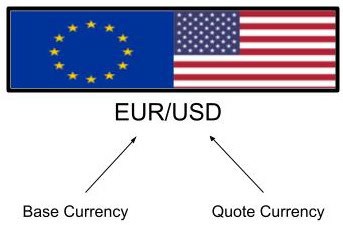
What is an Exchange Rate? This is the price of one currency in terms of another.
For example, if the EUR/USD exchange rate is 1.2000, it means 1 euro is equal to $1.20 US dollars.
Exchange rates fluctuate based on supply and demand, economic indicators, and geopolitical events.
What is a Pip? A pip is the smallest price move a currency pair can make. For most pairs, a pip is 0.0001.
For example, if the EUR/USD moves from 1.2000 to 1.2001, it has moved one pip.
Pips are crucial for measuring price movements and calculating profits or losses.
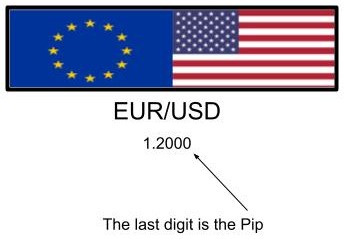
Some brokers now display a fifth digit called a “pipette,” used by scalpers trying to profit from very small market moves.
This feature is best ignored since it’s impossible to trade successfully over time.
What is Leverage? Leverage allows traders to control a larger position with less money.
For example, with 50:1 leverage, you can control $50,000 with just $1,000.
In the U.S., 50:1 is the maximum legal leverage.
In the Eurozone, 30:1 is the maximum legal leverage.
Regardless of their strategy, most traders use leverage of 10:1 or less.
While leverage can amplify profits, it also increases the risk of significant losses. It’s essential to use leverage wisely.
What is the Spread? The spread is the difference between a currency pair’s bid (selling) price and the ask (buying) price.
For example, if the EUR/USD bid price is 1.1998 and the asking price is 1.2000, the spread is two pips.
The spread represents the cost of trading and can vary depending on market conditions and the broker.
The bid price is the highest price a buyer is willing to pay for a currency pair, while the asking price is the lowest price a seller is willing to accept.
The difference between these two prices is the spread. Knowing these prices helps you understand when to buy or sell a currency pair.
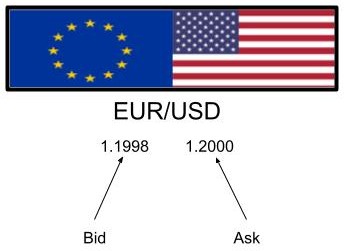
What is Margin? In Forex trading, margin refers to the collateral you must deposit with your broker to open and maintain a leveraged position.
It is a good-faith deposit, ensuring you can cover potential losses.
For example, if you want to control a $100,000 position with a 1% margin requirement, you need to deposit $1,000.
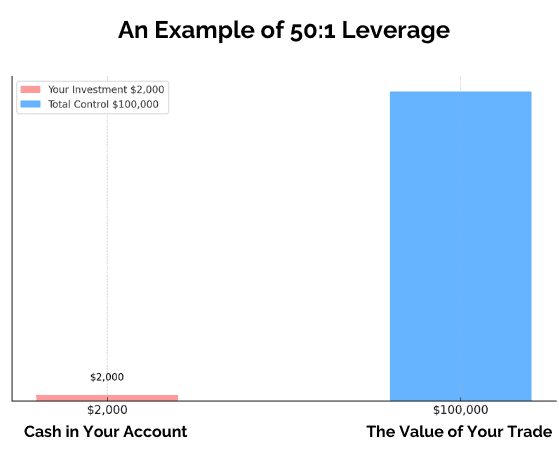
While trading on margin allows you to amplify your potential profits, it also increases the risk, as losses can exceed the initial margin deposit.
Effective margin management is crucial, as it helps you avoid margin calls, where the broker demands additional funds to keep the position open.
Understanding and managing margin requirements can help you make informed decisions and protect your capital in the volatile Forex market.
What is a Lot? A lot is a standardized unit of measurement for trade size in Forex.
The standard lot size is 100,000 units of the base currency.
There are also mini lots (10,000 units) and micro lots (1,000 units).
Choosing the correct lot size helps manage risk according to your trading strategy and account size.
Most retail Forex brokers size trades in micro lots; however, always check with your broker for details regarding their platform.
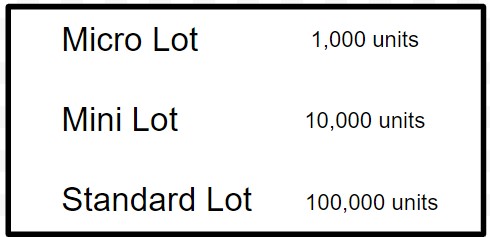
What are Long and Short Positions? “Going long” means buying a currency pair with the expectation that its value will increase.
“Going short” means selling a currency pair with the expectation that its value will decrease.
What are Bear and Bull Markets? A bear market is characterized by falling prices and negative sentiment, while a bull market is characterized by rising prices and positive sentiment.
Recognizing these market conditions helps traders make informed decisions.
What are the Essential Basics Traders Need to Know?
Learn the Basics: Before starting trading, it’s essential to learn the Forex market basics.
This includes understanding the market’s workings, key terms, and trading strategies.
Choose a Reliable Broker: A reliable forex broker ensures a safe and efficient trading experience.
A reputable broker provides a secure trading environment, protecting your funds and personal information from fraud and cyber threats.
They also offer transparent pricing, competitive spreads, and access to a wide range of currency pairs, essential for effective trading.
Additionally, a reliable broker is regulated by financial authorities, ensuring they adhere to strict standards and practices.
Good customer support and a user-friendly trading platform are other important factors contributing to a positive trading experience; choosing a broker is a critical decision for any trader.

Open a Trading Account: Once you choose a broker, you must open a trading account.
There are different types of accounts, such as demo accounts for practice and live accounts for actual trading.
Fund Your Account: Deposit money into your trading account. Start with a small amount, such as $2000 U.S., until your experience grows.
Use a Trading Platform: A trading platform is software your broker provides that allows you to place trades and monitor the market.
Popular platforms include MetaTrader 4 and MetaTrader 5; however, brokers offer web-based, mobile, and proprietary platforms.
The primary attraction of MetaTrader is the use of “Expert Advisors,” which is automation software that allows the platform to open and close trades automatically based on the tactics of the Expert Advisors.
If you are a position trader, avoid MetaTrader and Expert Advisors and instead use a mobile, web-based, or proprietary trading platform.
Automated trading has an unsuccessful track record and isn’t in a position trader’s interest.
You can read in the next section why I recommend TradingView for most traders and why I use it myself.
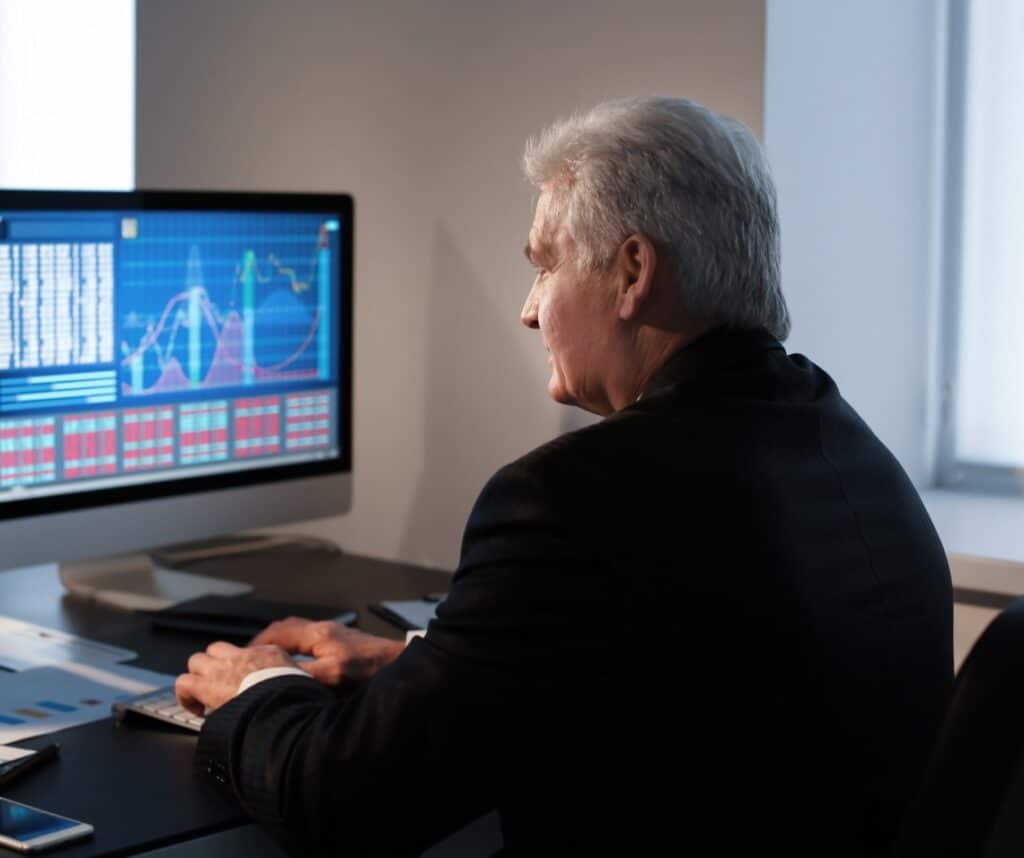
Develop a Trading Plan: A Forex trading plan is a structured approach that outlines a trader’s strategy for making profitable trades.
It includes setting clear goals, defining risk tolerance, and specifying trade entry and exit points.
The plan should also detail the types of analysis used (technical, fundamental, or both), criteria for selecting currency pairs, and guidelines for money management, such as position sizing and the use of stop-loss and take-profit levels.
A well-defined trading plan can help improve your chances of long-term success in the Forex market.
Practice with a Demo Account: Using a demo account before trading with real money offers several significant benefits.
It allows you to familiarize yourself with the trading platform and its features without any financial risk.
Additionally, a demo account allows you to practice and refine trading strategies in actual market conditions, helping you gain confidence and experience.
Simulating actual trading scenarios also helps one understand the impact of various market events and develop effective risk management techniques.
A demo account is a crucial learning tool, ensuring you are better prepared and more knowledgeable when transitioning to live trading.
Start Trading: Once you feel confident, start trading with real money. Begin with small trades and gradually increase your position size as you gain experience.
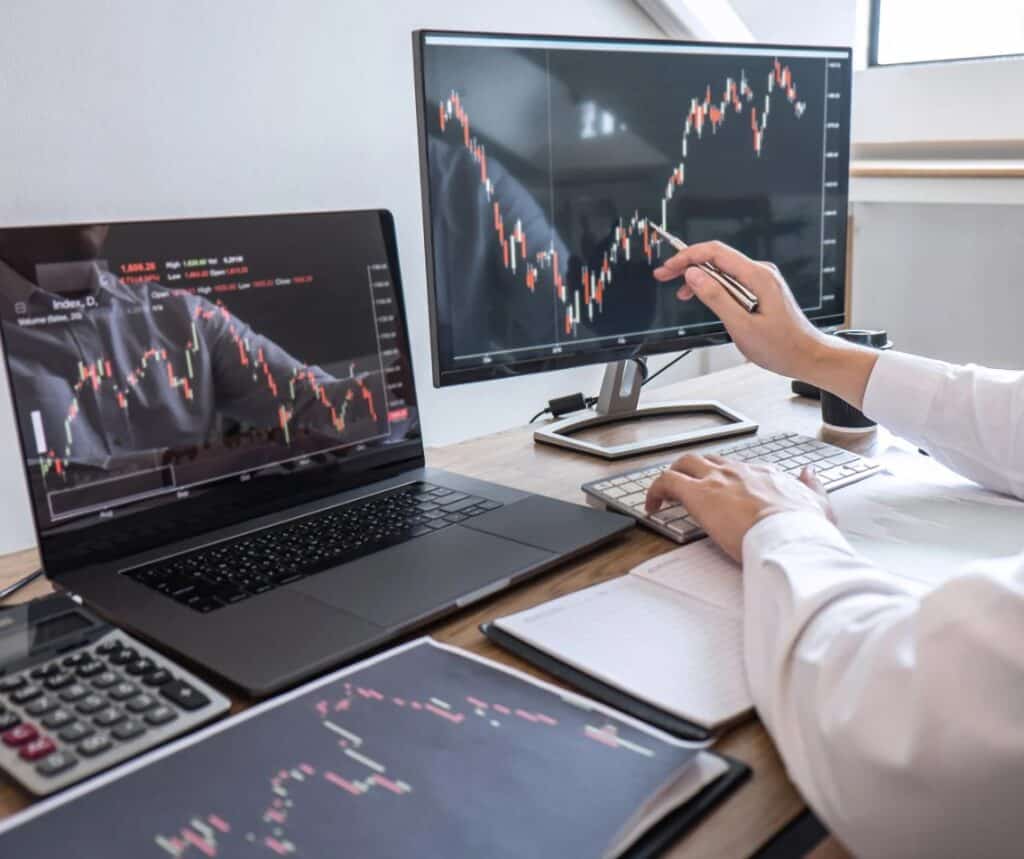
TradingView vs. MetaTrader 4/5: Why TradingView Stands Out
TradingView and MetaTrader 4/5 (MT4/MT5) are both popular trading platforms, but TradingView is a superior option, especially for position Forex trading charting and analysis.
With advanced charting tools, over 100 built-in indicators, and a user-friendly scripting language (Pine Script), TradingView offers unmatched flexibility.
It also provides unique timeframes and extensive customization options, allowing traders to fine-tune their strategies.
In comparison, MT4/MT5 have more basic charting tools and are less intuitive for customizations.
TradingView’s web-based platform is accessible on any device and automatically synchronizes across desktops, tablets, and smartphones.
This ensures a seamless experience for traders on the go. MT4/MT5, while reliable, are desktop-centric and lack cross-device synchronization, making them less convenient.
TradingView also excels in customizable alerts, offering real-time notifications via email, SMS, or push notifications, while MT4/MT5 only supports basic alerts.
TradingView’s modern, intuitive design makes it easy to use, whereas MT4/MT5’s outdated interface and the steeper learning curve can deter beginners.
While MT4/MT5 are free through brokers, they’re often tied to broker-specific setups.
TradingView, on the other hand, is broker-independent. It offers free and premium plans that offer flexibility and advanced features.
Position Forex is a TradingView affiliate. If you sign up for a paid plan using this link, we receive a small commission.
How to Open and Close a Forex Trade: A Step-by-Step Guide
Entering and exiting Forex trades might seem intimidating for beginners, but once you understand the process, it’s straightforward.
Success in trading hinges on proper planning, execution, and risk management.
This guide will walk you through each step, from setting up your platform to closing a trade and reviewing your results, ensuring you’re equipped for smooth trading.
Step 1: Set Up Your Trading Platform
This will be your first task if you haven’t selected a broker.
- Choose a Broker: Select a reputable broker that meets your needs for fees, tools, and regulatory oversight.
- Install the Trading Platform: Most brokers offer platforms like MetaTrader 4 (MT4), MetaTrader 5 (MT5), or proprietary software. Install it on your device. As described earlier, choose the platform best for your trading.
- Log In: Use the account credentials provided by your broker to access your trading account.
Step 2: Analyze the Market
- Fundamental Analysis: Review economic data, interest rate decisions, and news events affecting your chosen currency pair.
- Technical Analysis: Study price charts and apply technical tools like trend lines, support/resistance levels, and indicators to identify trade setups.
- Select a Currency Pair: Based on your analysis, choose a pair (e.g., EUR/USD or GBP/JPY) to trade.
Step 3: Plan Your Trade
- Set Your Risk Parameters: Determine how much of your account balance you are willing to risk (e.g., 1-2%).
- Calculate Position Size: Use a position size calculator to choose an appropriate lot size based on your risk tolerance.
- Define Entry and Exit Points:
- Set a clear price level for entering the trade.
- Define stop-loss (SL) and take-profit (TP) levels to manage risk and lock in profits.
Step 4: Open the Trade
- Access the Trading Panel: On your platform, select your desired currency pair and click “New Order” or a similar option.
- Choose Your Order Type:
- Market Order: Executes immediately at the current price.
- Pending Order: Executes at a specified price in the future (e.g., Buy Stop, Sell Limit).
- Enter Trade Parameters:
- Record your SL and TP levels.
- I don’t recommend entering SL and TP levels with your broker but instead managing them manually.
- Specify the lot size for the trade.
- Record your SL and TP levels.
- Confirm the Trade: Click “Buy” if you anticipate the price will rise, or “Sell” if you expect it to fall.
Step 5: Monitor the Trade
- Track Price Movement: Watch how the market behaves relative to your position.
- Adjust If Necessary: Based on market conditions, you may modify your SL or TP, but avoid emotional decisions or over-managing the trade.
Step 6: Close the Trade
- Manual Closure:
- Navigate to the “Trade” or “Positions” tab on your platform.
- Select the trade and click “Close.”
- Automatic Closure:
- The trade will automatically close if it reaches your predefined SL or TP levels.
- Check Results: Review the profit or loss outcome for the trade.
Step 7: Record and Reflect
- Document the Trade: Log details such as entry and exit points, reasons for the trade, and its outcome in your trading journal.
- Analyze Performance: Identify what worked and what could improve. This step is crucial for refining your strategy and developing as a trader.
By following this structured approach, you’ll not only execute trades with precision but also build habits that promote consistency and long-term success in Forex trading.
What are Basic Forex Trading Strategies?
Technical Analysis: This involves analyzing charts and using tools and indicators to predict future price movements.
Too many indicators are available for discussion here; however, I recommend combining trend, momentum, Japanese Candlestick patterns, chart patterns, and support and resistance.
You can learn more about my program, the Six Basics of Chart Analysis, at the link here.
Fundamental Analysis: Analyzing economic indicators, news, and events that can affect currency prices. For example, interest rate changes, employment data, and political events.
Fundamental analysis doesn’t get enough attention from traders.
Too many believe price movement and technical analysis are all that’s required.
I recommend paying great attention to economic fundamentals when considering a trade.
There is a need to consider fundamental analysis because the biggest traders in the market are very focused on them.
Day Trading: Day traders open and close positions within the same day. They aim to profit from very short-term price movements.
However, this is the riskiest form of trading and the one most traders attempt.
I recommend you avoid it unless you have much time and capital to master it. The odds are against your success.
Swing Trading: Swing traders hold positions for several days and aim to profit from short—to medium-term price movements.
This is also risky trading because it is short-lived, and the Forex market is open 24 hours a day, five days a week.
It’s too easy for an event to occur while you are unavailable, upsetting your trade.
Position Trading: Position traders hold positions for weeks or months. They aim to profit from long-term trends and fundamental changes in the market.
This is the lowest-risk form of Forex trading, which I recommend and practice.
I only trade at the weekly market open, making it easy to manage my trading in a 24×5 market.
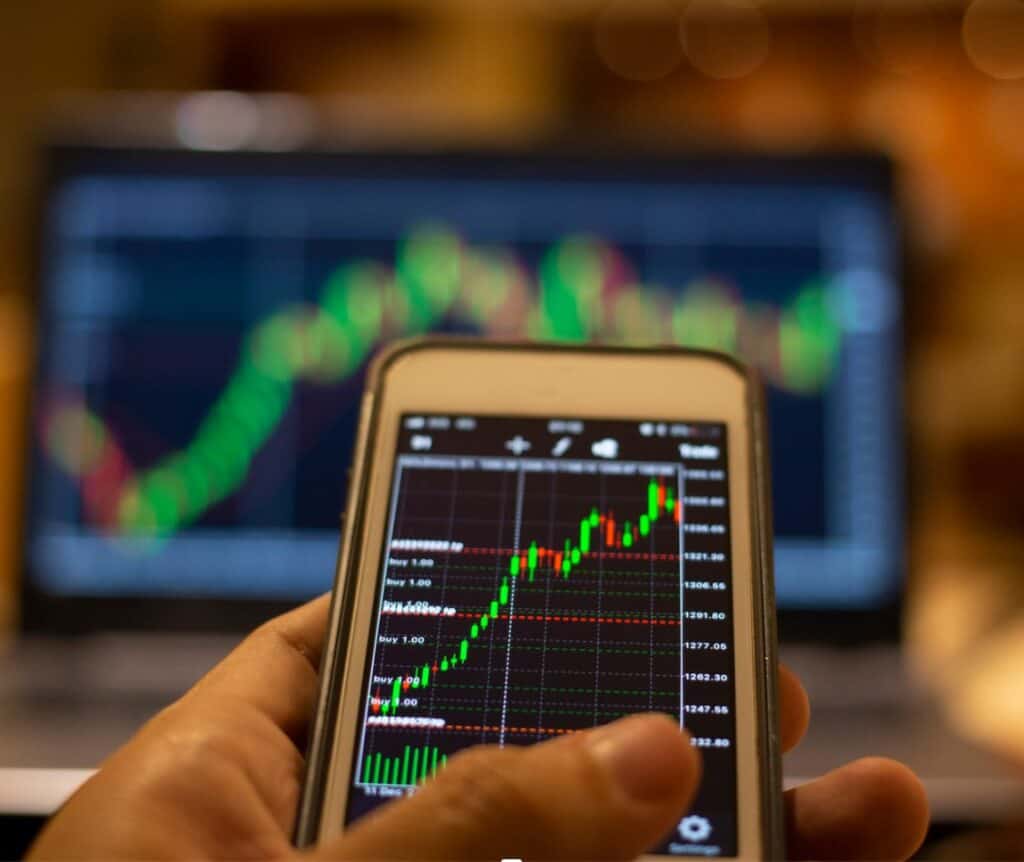

Looking for a Strategy?
Download the Six Basics of Chart Analysis and sign up for Forex Forecast to learn a bottom-up approach to analyzing Forex markets and weekly market updates.
Who Trades Forex and Why?
The Forex market’s vast size and continuous operation across various time zones make it accessible to a wide range of participants, each with unique motives for entering the currency trading arena.
Banks
Banks are among the most significant players in the Forex markets.
They operate on several levels, from the large international banks that provide quotes for various currencies and match buyers and sellers from across the globe to smaller banks that deal with retail clients.
Banks trade currencies to provide these services, hedge against currency risk, assist with international trade financing, and profit from speculative trading.
Financial Institutions
In addition to banks, other financial institutions, such as investment managers, hedge funds, and pension funds, participate in Forex trading.
These institutions manage vast capital and trade currencies to diversify their portfolios, hedge against currency risk, or profit from currency movements.
Their large trades can significantly influence currency values due to the volumes involved.
Corporations
Multinational corporations engage in forex trading to facilitate their international business operations.
They must exchange currencies to settle transactions in different countries or hedge against potential losses due to currency fluctuations.
For instance, a U.S. corporation with operations in Europe might buy euros and sell dollars to fund its expenses in Europe.
Governments and Central Banks
Governments and central banks trade Forex to manage their country’s currency values, reserves, and economic stability.
Central banks, for example, may intervene in the Forex market to weaken or strengthen their currency depending on their economic goals, such as boosting exports or controlling inflation.
Individual Traders
Individual or retail traders include non-professional speculators and investors who trade Forex, usually through brokers or banks.
They participate in the Forex market for various reasons, including profiting from fluctuations in exchange rates, diversifying investment portfolios, and hedging against currency exposure in other investments.
With the advent of online trading platforms, individual participation in forex trading has grown exponentially, making it more accessible to the general public.
Each group’s engagement in the Forex market is driven by economic, professional, and personal objectives, contributing to the dynamic and complex nature of Forex trading.
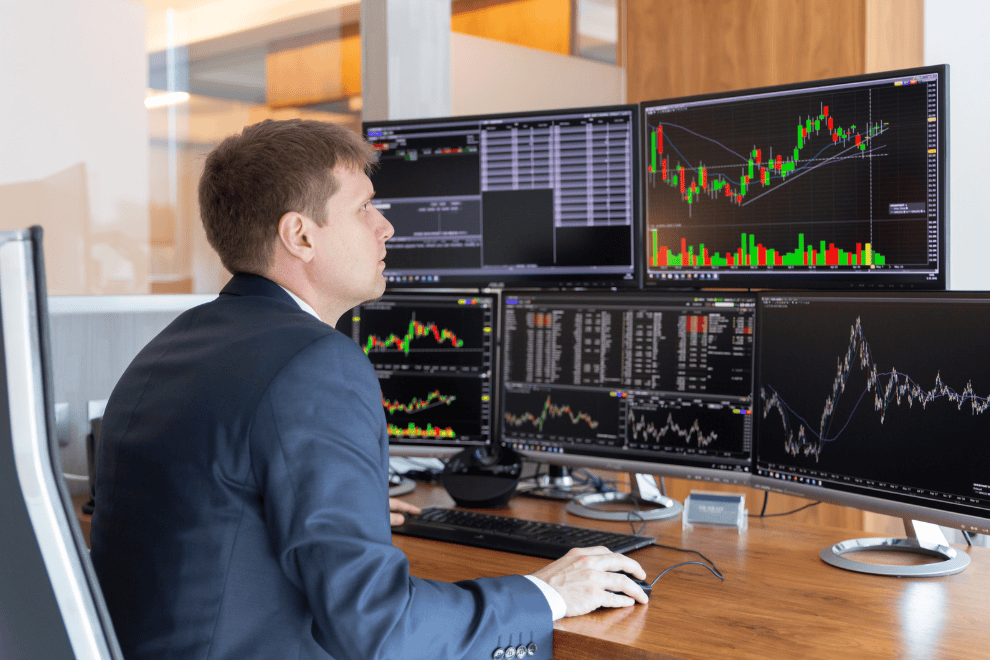
What Moves Currency Values in Forex Markets?
Several factors can cause fluctuations in currency values, and understanding
these can be crucial for traders:
Economic Data
Economic indicators profoundly impact the Forex market, reflecting a country’s economic health.
Data such as GDP growth rates, employment figures, retail sales, and inflation reports can significantly sway currency values.
For instance, higher-than-expected inflation figures can lead to currency depreciation as it may erode purchasing power.
Market Sentiment
Market sentiment refers to investors’ attitudes toward a particular currency and can be influenced by news, reports, and the economic outlook.
If traders believe a currency will strengthen, they will buy more of it, and vice versa.
Sentiment can be volatile, often changing due to news events or market data.
Central Bank Decisions
Central banks play a crucial role in the Forex market through their monetary policy decisions regarding interest rates.
When a central bank raises its rates, the currency typically strengthens because higher rates provide better returns on investments held in that currency.
Conversely, cutting rates can weaken a currency as it becomes less attractive to investors.
Value of Country’s Government Bonds
The value of a country’s government bonds can also affect its currency strength.
If bond yields are high, it suggests that the country is considered a safe investment, attracting foreign capital that increases demand for its currency.
Lower bond yields might indicate the opposite, potentially weakening the currency.
Political Events
Political stability or instability can significantly influence currency strength.
Elections, political scandals, and changes in government can lead to economic uncertainty, weakening the currency.
Conversely, political stability tends to attract investment and strengthen the currency.
Prices of Commodities
For countries heavily reliant on exporting commodities, the prices of these commodities can impact currency values.
For example, a rise in oil prices can strengthen the currency of an oil-exporting country like Canada.
Similarly, a drop in commodity prices can weaken the currencies of these exporting nations.
Understanding these factors can give Forex traders insights into currency movements and help them make informed trading decisions.
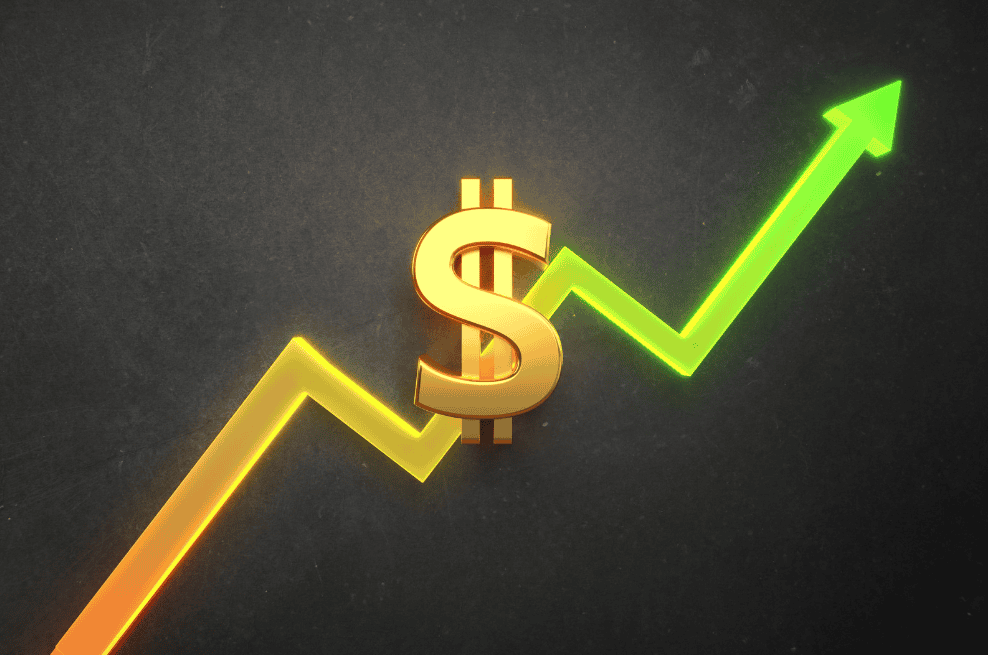
Basic Risk Management Means What?
Risk management is crucial in Forex trading to protect your capital. Here are some tips:
Identify Stop-Loss Levels: A stop-loss level is the price at which you will close your trade.
One option is to enter a stop-loss order into your broker’s platform. If the price is reached, the broker will close the trade automatically.
Unfortunately, stop-loss orders often result in unnecessary losses where prices only reach your stop momentarily, and then prices reverse.
I recommend identifying stop loss levels but manually closing trades if you are a position trader.
Shorter-term traders will need to use stop-loss orders since they cannot always close their trades for reasons such as being away from their trading platform or the market moving too fast for them to react.
Identify Take-Profit Levels: You can act on stop-loss levels manually or have your broker’s platform act automatically.
The same caveats apply.
Manage Your Leverage: Leverage in Forex trading allows you to control larger positions with a relatively small amount of capital, effectively magnifying both potential gains and losses.
For example, with 50:1 leverage, you can control a $50,000 position using just $1,000 of your money.
This amplifies the profit potential, as even small price movements can yield significant returns.
However, it also increases the risk, as losses can quickly exceed the initial investment if the market moves against the trader’s position.
One advantage of position trading is using small, lower-risk positions to capture more significant moves.
This tactic is easier to be successful with and requires less leverage.

Diversify Your Trades: Don’t put all your money into one trade. Diversify your trades to spread the risk.
This tactic also benefits position trading since short-term traders struggle to manage multiple Forex pairs.
Stay Informed: Keep up with the latest news and developments in the Forex market. This helps you make informed trading decisions.
The Benefits of Forex Trading, Especially Position Trading
Forex trading is a dynamic and accessible financial market, offering opportunities for traders of all styles.
Among these, position trading is a long-term, strategic approach focusing on capturing major market trends over weeks, months, or even years.
Let’s explore the general benefits of Forex trading, followed by the unique advantages of position trading.
Why Trade Forex?
The Forex market is the largest financial market in the world, with trillions of dollars traded daily. Its unique characteristics make it an attractive choice for many traders:
- Liquidity and Accessibility: With high liquidity, trades are executed almost instantly, reducing slippage and providing smooth market access.
- 24/5 Trading Hours: The Forex market operates continuously from Monday to Friday, allowing traders flexibility to engage with the market at their convenience.
- Low Barriers to Entry: Traders can begin with small amounts of capital and use leverage to amplify their market exposure.
- Global Opportunities: Forex trading allows you to participate in the global economy, trading currencies influenced by worldwide events and trends.
- Diverse Strategies: Whether you prefer quick trades (scalping), medium-term approaches (swing trading), or long-term methods (position trading), Forex accommodates all styles.
What Is Position Trading?
Position trading involves holding trades over extended periods, ranging from weeks to years, to benefit from long-term trends. Unlike day trading or scalping, position trading requires patience and a focus on macroeconomic factors rather than short-term price fluctuations.
The Advantages of Position Trading
Position trading offers unique benefits for those who prefer a less time-intensive and more strategic trading approach. Here’s why this style is appealing:
Less Time-Intensive
Position trading doesn’t demand constant screen time. Instead, you focus on identifying significant trends and making calculated moves. This approach is ideal for those with other commitments or limited time to monitor the market.
Lower Emotional Stress
By targeting long-term trends, position traders avoid reacting to daily market noise and volatility. This style minimizes the emotional pressure that comes with frequent trading decisions, fostering a more disciplined mindset.
Potential for Significant Gains
Position traders aim to capture substantial price movements driven by long-term economic shifts, policy changes, or geopolitical events. Holding a trade over weeks or months allows you to benefit from compounding gains.
Strong Foundation in Fundamentals
A major component of position trading is fundamental analysis—understanding how macroeconomic factors like interest rates, inflation, and GDP growth influence currencies. This reliance on broader economic knowledge builds a deeper understanding of global markets.
Lower Transaction Costs
Since position traders place fewer trades compared to short-term strategies, they save on commissions, spreads, and other transaction costs. Over time, these savings can significantly boost profitability.
Position Trading vs. Short-Term Strategies
Unlike scalping or day trading, position trading allows you to take a more hands-off approach.
You can analyze the market, set your trade parameters, and let the position ride, making occasional adjustments when necessary. Key distinctions include:
- Flexibility with Lifestyle: Position trading aligns well with a busy schedule, allowing you to maintain a balance between trading and other priorities.
- Risk Management: Wider stop-loss levels accommodate market fluctuations, reducing the likelihood of being stopped out by short-term volatility.
Is Position Trading Right for You?
Position trading suits traders who:
- Enjoy analyzing economic trends and their long-term impact.
- Have the patience to hold positions through temporary drawdowns.
- Want a trading style that complements a full-time job or other pursuits.
- Are comfortable with a slower pace of decision-making and results.
By focusing on long-term opportunities and avoiding the noise of daily price swings, position trading provides a relaxed yet highly effective way to engage with the Forex market.
Position trading could be the perfect fit for your trading journey if you value strategy, patience, and a broader perspective.
Conclusion
Forex trading offers significant profit opportunities but requires a thorough understanding of the market, careful planning, and disciplined execution.
Mastering key terms, choosing a reliable broker, developing and sticking to a robust trading plan, and managing risks effectively with tools like stop-losses and appropriate leverage can enhance your chance of success.
Practicing with a demo account and continuing to educate oneself about market trends and strategies are vital steps to becoming a proficient trader.
What’s the Next Step?
Select a trading platform and a chart and discover the concepts discussed in this article.
Look for opportunities to consider what kind of trader you wish to be and your next steps.
Once you’re ready to trade, choose a strategy and process you believe will work for you.
If you need help developing an analysis process, you can use our Six Basics of Chart Analysis.
If you’re unfamiliar with the Six Basics, you can learn them here for free.
The “Six Basics” will give you a strong foundation in chart analysis, which you can incorporate with what you’ve learned about Forex trading.
In addition, when you get the “Six Basics,” you’ll also get Forex Forecast delivered to your inbox every Sunday.
Forex Forecast includes:
- Trade Ideas and Analysis
- I will use the Six Basics of Chart Analysis and Advanced Strategies to show you the trade opportunities I’m watching.
- Case Studies from Around the Web
- Watch how applying the Six Basics worked on some of the best, most profitable trades.
- Trading Education Guides and Videos
- Want to learn most Six Basics techniques and advanced strategies?
- I produce videos and guides to help you learn and improve trading practices.
- Links to New Articles
- I publish new articles on topics traders will want to know about every week, and you can find out when they post.
- Positionforex.com News
- Did something change at positionforex.com? Learn about it here first!
- Links to upcoming webinars
- Attend free webinars to improve your trading.
- And Much More
- Tools, Membership-only Videos, and more will be released in the Forex Forecast.
The best part – it’s completely free.
Take a Forex Trading 101 Quiz
Test your knowledge of what you’ve learned in this article. Below are ten questions on the basics of Forex trading as detailed in this article.
The answer key is at the end (don’t peek).
Question 1:
What does the Forex market primarily trade?
a) Stocks
b) Commodities
c) Currencies
d) Bonds
Question 2:
What is the definition of a “pip” in Forex trading?
a) The smallest price movement of a currency pair
b) The profit margin of a trade
c) The difference between bid and ask price
d) A type of trading platform
Question 3:
What is leverage in Forex trading?
a) A fee charged by brokers
b) A tool that allows traders to control a larger position with a smaller amount of capital
c) A risk management technique
d) The spread between buying and selling prices
Question 4:
Which of the following represents a currency pair?
a) EUR/USD
b) USD/Gold
c) Bitcoin/Stock
d) Oil/USD
Question 5:
What does a “spread” refer to in Forex trading?
a) The time it takes to execute a trade
b) The difference between the bid and ask price of a currency pair
c) The gap between two market sessions
d) The amount of profit in a trade
Question 6:
What is the purpose of a stop-loss order?
a) To maximize profits on a winning trade
b) To automatically close a trade at a predefined loss level
c) To increase leverage during a trade
d) To execute a trade at the current market price
Question 7:
What does the term “lot size” refer to in Forex trading?
a) The amount of money deposited into your account
b) The size of a trading position
c) The number of trades opened at the same time
d) The profit made per trade
Question 8:
What is the primary advantage of trading Forex over other markets?
a) Fixed trading hours
b) High liquidity and 24/5 trading
c) Guaranteed profits with every trade
d) No need for technical analysis
Question 9:
What is the function of a Forex broker?
a) To dictate market trends
b) To connect traders to the Forex market and facilitate trade execution
c) To manage your trading account for you
d) To provide free trading tools without requiring capital
Question 10:
What is the base currency in the currency pair GBP/USD?
a) USD
b) GBP
c) EUR
d) Both GBP and USD
Answer Key
- c) Currencies
- a) The smallest price movement of a currency pair
- b) A tool that allows traders to control a larger position with a smaller amount of capital
- a) EUR/USD
- b) The difference between the bid and ask price of a currency pair
- b) To automatically close a trade at a predefined loss level
- b) The size of a trading position
- b) High liquidity and 24/5 trading
- b) To connect traders to the Forex market and facilitate trade execution
- b) GBP
Frequently Asked Questions
What Is Forex Trading?
Forex trading, or foreign exchange trading, involves buying and selling currencies to profit from changes in their exchange rates.
Traders speculate on the price movements of currency pairs, such as EURUSD, in a highly liquid and continuously operating global market.
How Does Leverage Work in Forex Trading?
Leverage allows traders to control larger positions with a smaller amount of capital.
For example, with 50:1 leverage, a trader can control $50,000 with just $1,000.
While leverage can amplify profits, it also increases the potential for significant losses, making risk management crucial.
What Is a Pip in Forex Trading?
A pip, short for “percentage in point,” is the smallest price movement in the exchange rate of a currency pair. For most currency pairs, a pip is equal to 0.0001.
Pips are used to measure price changes and calculate profits or losses in forex trading.
Why Should I Use a Demo Account Before Trading with Real Money?
A demo account allows traders to practice forex trading without risking real money.
It helps them become familiar with the trading platform, test strategies, and gain confidence in their trading skills.
This preparation is essential for reducing mistakes and improving performance when trading live.
Forex Trading Disclosure Statement
Risk Warning:
Forex trading involves significant risk and may not be suitable for all investors. The leveraged nature of Forex trading can work both for and against you, leading to substantial gains or losses. Before trading Forex, you should carefully consider your financial objectives, experience level, and risk tolerance. It is possible to lose more than your initial investment, and you should only trade with money you can afford to lose.
Market Risks and Volatility:
Forex markets are influenced by global economic, political, and social events, which can result in unpredictable price movements. High market volatility can lead to sudden and substantial changes in currency values, potentially causing losses that exceed your initial deposit.
Leverage Risks:
Leverage amplifies both potential gains and potential losses. While leverage can increase profitability, it also increases the risk of significant losses, including the loss of your entire trading capital.
Trading Tools and Technology Risks:
Forex trading platforms, including those offered by brokers, are subject to technology risks, such as system failures, latency issues, and potential errors in price feeds. Traders should be aware that these risks can impact the execution of trades and trading outcomes.
No Guarantee of Profitability:
Past performance in Forex trading is not indicative of future results. There is no guarantee that you will achieve profits or avoid losses when trading Forex. Market conditions and individual trading strategies vary, and no trading system can eliminate the inherent risks of Forex trading.
Educational Purposes Only:
Any information provided about Forex trading, including strategies, analysis, or market commentary, is for educational purposes only and should not be considered financial advice. Consult a qualified financial advisor or tax professional before making any trading decisions.
Regulatory Compliance:
Forex trading is regulated differently in various jurisdictions. Ensure that you are trading with a broker that is licensed and compliant with regulations in your country of residence.
Responsibility:
You are solely responsible for your trading decisions and the risks associated with them. It is your duty to understand the terms and conditions of Forex trading, including margin requirements, stop-losses, and other risk management tools.
Acknowledgment:
By engaging in Forex trading, you acknowledge that you have read, understood, and accepted this disclosure statement. You accept full responsibility for the outcomes of your trading decisions and agree to trade at your own risk.
This disclosure is intended to provide an overview of the risks associated with Forex trading and is not exhaustive. For additional information, consult your broker and other reliable financial resources.


